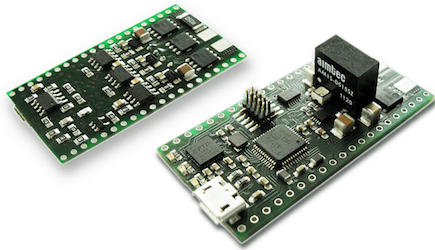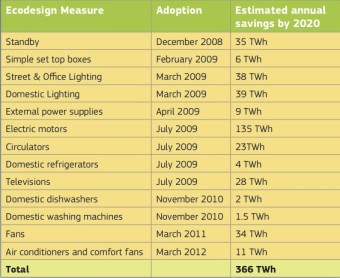Help Wanted: EU Energy Regulations Require Smart Design
August 14, 2013
on
on

Elektor and Toshiba challenge designers to create a new energy saving application for the demo-board of the Toshiba M370-controller. The contest is inspired by the EU target to improve energy efficiency with 20% by 2020. One measure is to stimulate energy saving strategies in the design stage of products. First prize is a 15” Toshiba multimedia notebook.
Energy efficiency is part of the 2007 EU climate and energy goals, known as the 20-20-20 targets: reducing greenhouse emissions with 20% compared to 1990 levels; increase the share of energy production from renewable resources to 20% and a 20% energy efficiency improvement.
One policy to reduce energy consumption is the Ecodesign Directive. It comprises of a set of mandatory design requirements for so called Energy related Products (ErPs). 80% of the amount of energy used by a product during its life-cycle is determined in the design phase, hence the Directive's focus on, well, design.
There are 10 different ErP product groups currently falling under the Ecodesign Directive. They're subdivided in Energy using Products (EuPs) such as ICT devices and refrigerating equipment and Energy related Products (yes, the subclass has been given the same name as the parent class) like isolation material and water using equipment.
Challenge
Since Toshiba and Elektor are both in the ErP business, they've teamed up to kick off a challenge in the spirit of ecodesign. Designers are invited to create an original, energy saving, ecofriendly application for Toshiba's Sigma board (a demo-board for the M373 32-bit Microcontroller). There are five prizes to be won including a 15” Toshiba multimedia notebook. The deadline for submission is September 30 2013. For more information go to the design challenge site.
366 TWh
 One example of a design requirement is limiting the power consumption of a device in standby mode to 0.5 W. This measure alone is estimated to save 35 TWh annually in the EU by 2020. Another 12 measures will amount to a total saving of approximately 366 TWh in 2020.
One example of a design requirement is limiting the power consumption of a device in standby mode to 0.5 W. This measure alone is estimated to save 35 TWh annually in the EU by 2020. Another 12 measures will amount to a total saving of approximately 366 TWh in 2020.
Another aim of the Ecodesign Directive is to homogenize regulation within the European market. Instead of having to comply with the disparate legislations of the 27 member states, manufacturers will have a uniform set of rules to adhere to.
Image: Toshiba Sigma board
Table: EU ecodesign brochure
Energy efficiency is part of the 2007 EU climate and energy goals, known as the 20-20-20 targets: reducing greenhouse emissions with 20% compared to 1990 levels; increase the share of energy production from renewable resources to 20% and a 20% energy efficiency improvement.
One policy to reduce energy consumption is the Ecodesign Directive. It comprises of a set of mandatory design requirements for so called Energy related Products (ErPs). 80% of the amount of energy used by a product during its life-cycle is determined in the design phase, hence the Directive's focus on, well, design.
There are 10 different ErP product groups currently falling under the Ecodesign Directive. They're subdivided in Energy using Products (EuPs) such as ICT devices and refrigerating equipment and Energy related Products (yes, the subclass has been given the same name as the parent class) like isolation material and water using equipment.
Challenge
Since Toshiba and Elektor are both in the ErP business, they've teamed up to kick off a challenge in the spirit of ecodesign. Designers are invited to create an original, energy saving, ecofriendly application for Toshiba's Sigma board (a demo-board for the M373 32-bit Microcontroller). There are five prizes to be won including a 15” Toshiba multimedia notebook. The deadline for submission is September 30 2013. For more information go to the design challenge site.
366 TWh
 One example of a design requirement is limiting the power consumption of a device in standby mode to 0.5 W. This measure alone is estimated to save 35 TWh annually in the EU by 2020. Another 12 measures will amount to a total saving of approximately 366 TWh in 2020.
One example of a design requirement is limiting the power consumption of a device in standby mode to 0.5 W. This measure alone is estimated to save 35 TWh annually in the EU by 2020. Another 12 measures will amount to a total saving of approximately 366 TWh in 2020.Another aim of the Ecodesign Directive is to homogenize regulation within the European market. Instead of having to comply with the disparate legislations of the 27 member states, manufacturers will have a uniform set of rules to adhere to.
Image: Toshiba Sigma board
Table: EU ecodesign brochure
Read full article
Hide full article


Discussion (0 comments)